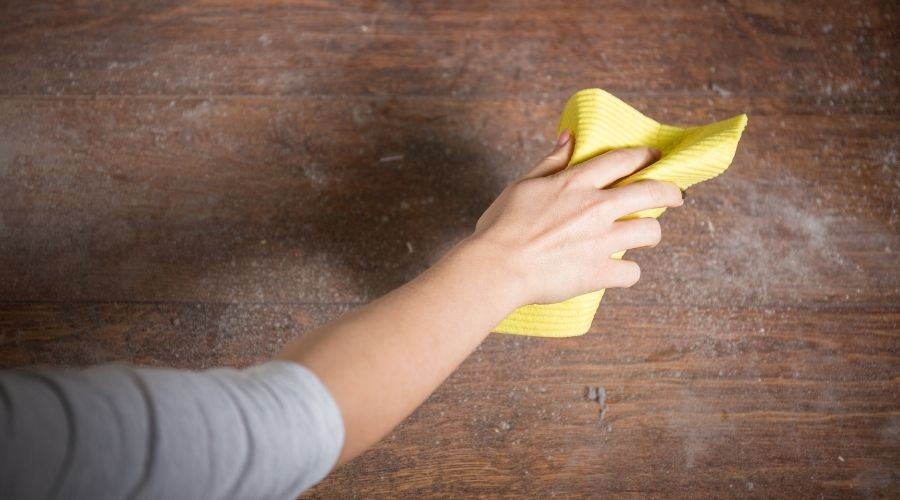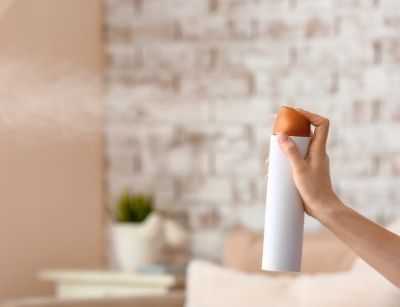
Three of the Most Common Indoor Air Pollutants To Be Avoided
When it comes to maintaining a home’s indoor air quality, nothing is more important than minimizing the level of airborne pollutants in the home. The HVAC filter plays a crucial role in trapping pollutants like dust, pollen, and dander, but most residential filters won’t do much against some common smaller-particle pollutants - many of which can be much more dangerous.
Protecting against these is typically a matter of stopping them at the source as well as spotting signs of them as early as possible. So keep reading to learn all about three of the most common indoor air pollutants and how to defend against them.
High Moisture Levels
The first pollutant to watch out for is a simple one - moisture. When the moisture content of a home’s air gets too high, it can cause various problems. Not only can high humidity damage the home (particularly hardwood), but it can also make it difficult for the body to regulate temperature properly.
In terms of air quality, excess water vapor in the air can make it difficult to breathe and absorb oxygen. Moist environments can also harbor mold growth, which can severely impact a home’s indoor air quality. To prevent this, it’s best to keep the home’s relative humidity between 30-50% but especially no higher than 60%.
Volatile Organic Compounds (VOCs)
The second air pollutant commonly found in homes is even less familiar but more prevalent - volatile organic compounds or VOCs. These include a range of chemicals used in a slew of products, including gasoline, paints, solvents, adhesives, pesticides, cosmetics, household cleaners, and even flooring or manufactured wood products.
Some VOCs are more dangerous than others, potentially causing damage to the central nervous system or other organs, difficulty breathing, or even cancer. Homeowners can minimize the presence of VOCs by using products with “Low VOC” printed on the label, not storing products containing VOCs indoors (gas cans, paints, solvents, etc.), and providing ample ventilation when using VOC-heavy products indoors.
Carbon Monoxide (AKA the Silent Killer)
The third pollutant is one that many people are aware of but still causes hundreds of deaths and thousands of cases of non-fatal poisoning every year - carbon monoxide. Carbon monoxide (CO) is produced when any sort of fuel is burned, be it natural gas, gasoline, or wood. Common sources include clogged or unvented fireplaces, malfunctioning or improperly ventilated gas-burning appliances (ranges, furnaces, water heaters, etc.), gas grills, and vehicle exhaust.
Carbon monoxide is undetectable to the senses and can cause brain damage or death within minutes, so it’s vital to protect against it and be on the lookout for early warning signs of CO exposure. These include headaches, difficulty breathing, dizziness, confusion, weakness, blurred vision, and loss of consciousness.
Suppose homeowners have experienced or observed any of these symptoms or even remotely suspect a carbon monoxide leak. In that case, they should exit the home immediately, contact their local emergency services, and seek medical attention for those with symptoms. For prevention, homeowners can install CO detectors and have their gas appliances inspected and serviced annually by a licensed professional.
About Honest Abe’s Home Services
Honest Abe’s Home Services is an award-winning business offering a range of services from plumbing and HVAC to mold remediation and emergency repairs. They always provide honest advice, up-front pricing, and tailored solutions to fit any situation and budget. Honest Abe’s friendly experts are available 24/7, so call today for HVAC services in Osage Beach, MO!
Distribution Links +
- panhandle.newschannelnebraska.com
- www.wicz.com
- lifestyle.953hlf.com
- lifestyle.xtra1063.com
- lifestyle.us983.com
- www.wpgxfox28.com
- lifestyle.1045thedan.com
- www.htv10.tv
- www.wrde.com
- midplains.newschannelnebraska.com
- lifestyle.koltcountry.com
- lifestyle.3wzfm.com
- www.wboc.com
- www.ktvn.com
- www.snntv.com
- www.rfdtv.com
- central.newschannelnebraska.com
- metro.newschannelnebraska.com
- southeast.newschannelnebraska.com
- northeast.newschannelnebraska.com
- plattevalley.newschannelnebraska.com
- rivercountry.newschannelnebraska.com
- lifestyle.mykmlk.com
- www.wtnzfox43.com
- lifestyle.bigtalkerradio.com
- lifestyle.rewindmymusic.com
- lifestyle.967thewolf.net
- lifestyle.southernsportstoday.com
- lifestyle.thepodcastpark.com
- lifestyle.680thefan.com
- lifestyle.rewind1019.com
- lifestyle.countrylegends1059.com
- lifestyle.967wshv.com





